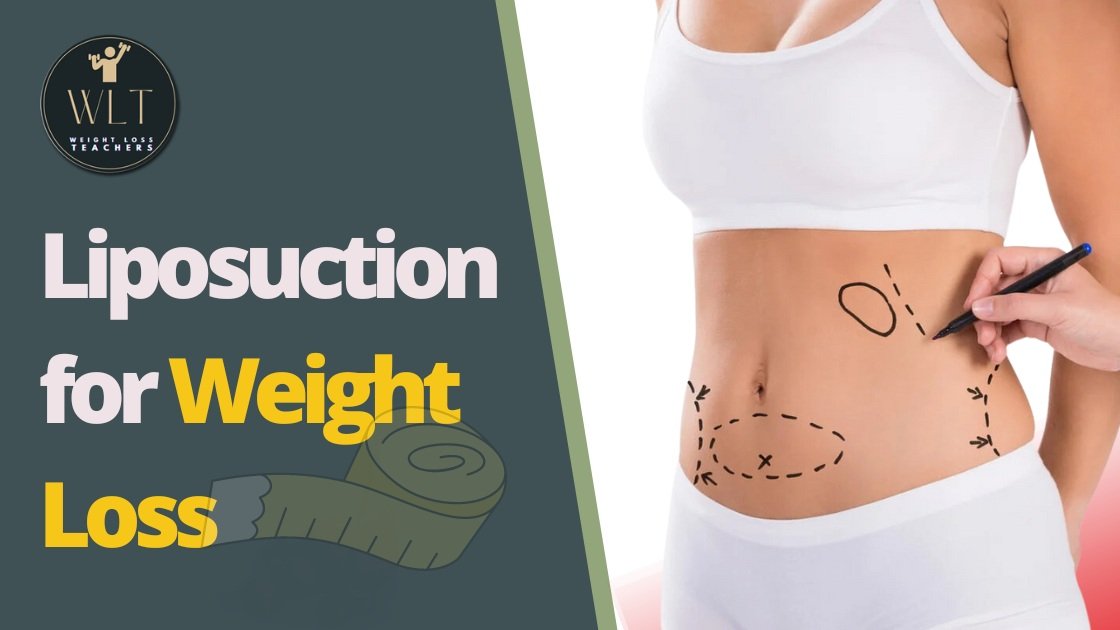
Liposuction for Weight Loss
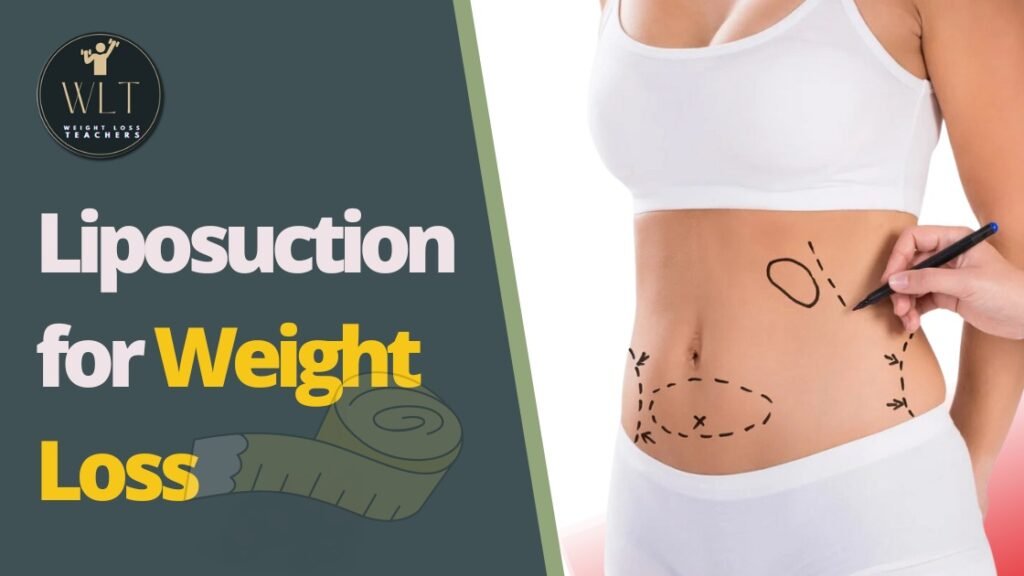
In today’s world, where people are more health-conscious and want to maintain their body shape, liposuction has become one of the most popular procedures to get rid of excess fat. Liposuction is a surgical procedure that removes fat deposits from the body by suction.
Table of Contents
Introduction
It is a safe and effective way to achieve weight loss, but it is not a substitute for a healthy lifestyle. In this article, we will discuss everything you need to know about liposuction for weight loss.

What is Liposuction?
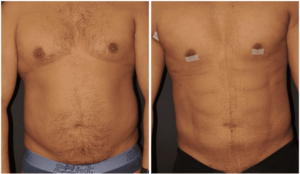
In the contemporary milieu, where the pursuit of a healthier lifestyle and a sculpted physique has taken center stage, liposuction has surged in popularity as a favored cosmetic procedure. The allure of liposuction lies in its ability to address the stubborn fat deposits that resist conventional efforts of exercise and diet, offering individuals an avenue to achieve the body contours they desire. This surgical intervention represents a sophisticated technique, targeting the removal of excess fat from multiple trouble spots across the body canvas, such as the thighs, abdomen, buttocks, hips, back, arms, and even the chin. The metamorphosis that liposuction can bring about is an embodiment of modern medicine’s prowess in harmonizing aesthetics and science.
Liposuction, while typically performed under general anesthesia, is a variable procedure, its duration contingent on the quantity of fat to be removed and the number of treated areas. The recuperation span following liposuction varies, ranging from several days to weeks, dictated by the extent of the surgery.
The essence of the liposuction procedure revolves around a delicate orchestration of incisions and a specialized instrument known as a cannula. Executed by skillful surgeons, these minor incisions serve as gateways for the introduction of the cannula into the body’s adipose-rich regions. The cannula, a slender and hollow tube, is the instrument of transformation, as it adeptly suctions away the excess fat, sculpting the contours of the body with an artistic finesse. This symphony of techniques and technology underscores the intricate nature of liposuction, which marries medical precision with the artistry of body contouring.
Liposuction’s significance is underscored by the fact that it is not confined to a standardized procedure; rather, its execution is adaptable and bespoke. The duration of the surgery is contingent upon a myriad of factors, most notably the quantum of fat slated for removal and the extent of the areas earmarked for treatment. This inherent variability allows surgeons to tailor the procedure to each individual’s unique needs, ensuring a personalized and holistic approach to body enhancement.
The culmination of the liposuction journey leads to a phase of post-operative convalescence, where the body’s remarkable regenerative capacities come into play. As the incisions heal and the body adjusts to its newly contoured form, the duration of recuperation becomes an individualized spectrum. Some individuals experience a swift convalescence, marked by a return to normalcy within a few days, while others require a more extended period for complete recovery. The tempo of this recuperative dance is orchestrated by the extent of the surgery and the body’s intrinsic response to the transformative process it has undergone.
Types of Liposuction

In the realm of cosmetic surgery, liposuction has not only become a staple but has also evolved into a diverse spectrum of techniques tailored to the intricacies of each individual’s body. The array of options available today demonstrates the marriage of medical innovation and patient-centric care. Here, we delve into the distinct varieties of liposuction, each showcasing its unique attributes and specialized applications.
1. Tumescent Liposuction
Tumescent Liposuction stands as the quintessential and widely performed variety, renowned for its safety and efficacy. This technique takes advantage of a carefully concocted solution comprising local anesthesia and epinephrine, injected into the target area. The dual function of this solution is remarkable – it effectively numbs the region, ensuring patient comfort, while also causing blood vessels to constrict. The result is twofold: the minimized blood loss during the surgery ensures enhanced safety, and the subdued discomfort leads to a more agreeable patient experience.
2. Ultrasound-Assisted Liposuction (UAL)
Ultrasound-Assisted Liposuction (UAL) takes liposuction’s evolution a step further by integrating ultrasonic energy. This innovative approach employs ultrasonic waves to preemptively break down fat cells before their extraction. UAL’s prowess shines in treating areas dense with fat, such as the upper back and male breast tissue. The ultrasonic energy effectively weakens the bonds between fat cells, rendering their removal smoother and less traumatic. Moreover, UAL has proven to be a boon for individuals seeking to refine or enhance the results of previous liposuction procedures, attesting to its versatility and effectiveness.
3. Laser-Assisted Liposuction (LAL)
Laser-Assisted Liposuction (LAL) harnesses the power of laser energy to revolutionize the fat removal process. By emitting laser energy, the fat cells are liquefied, easing their extraction and simultaneously initiating a skin-tightening effect. This dual benefit is particularly advantageous when targeting smaller fat areas like the neck or chin. The skin-tightening attribute results in a smoother and more contoured appearance, thus making LAL a preferred choice for those seeking precision and aesthetic refinement.
4. Power-Assisted Liposuction (PAL)
Power-Assisted Liposuction (PAL) epitomizes the fusion of technological innovation and procedural efficiency. This method integrates a vibrating cannula, the instrumental component responsible for breaking down fat cells. The vibrations imparted by the cannula disintegrate fat cells with greater ease and speed, resulting in a swifter procedure. This acceleration translates into reduced anesthesia exposure time, contributing to a streamlined patient experience. PAL’s forte lies in managing significant fat deposits, particularly in regions such as the abdomen or thighs.
Who is a Good Liposuction Candidate?
Although liposuction is an efficient technique for sculpting body contours, it is not a universal weight-loss option. Understanding the crucial requirements for this treatment is critical to ensuring the surgery’s safety and success. Individuals’ suitability for liposuction for weight loss is intimately linked to their physical health, aspirations, and realistic goals.
Liposuction is ideal for addressing localized fat deposits that defy diet and exercise attempts. It is not a method of weight loss for people who are overweight. Instead, it excels as a targeted technique to refine certain body parts. Those who are close to their ideal body weight—often within 30% of it—are good candidates for this surgery. This criterion not only assures that the operation is more effective but also reduces the possibility of excessive fat removal.
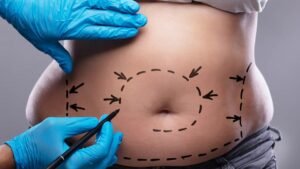
Another important factor in determining the suitability of liposuction and weight loss is physical health. Individuals in strong general health are better prepared for surgery and the post-operative recovery phase. A thorough examination of a person’s medical history, including pre-existing diseases and drugs, is required to determine their appropriateness for the surgery. This assessment is a precautionary procedure to avoid any potential consequences.
The presence of realistic expectations is also important. Liposuction is a revolutionary operation, but candidates must be aware of its restrictions. Clear communication with the surgeon is essential for matching expectations with achievable results. A surgeon’s knowledge assists in setting realistic goals and providing insight into expected outcomes from liposuction for fat loss, allowing the candidate to make an informed decision.
Individuals classified as obese, as defined by a Body Mass Index (BMI) greater than 30, may not be considered ideal candidates for liposuction for fat loss. This is not a reflection of their worth but rather of the scope of the procedure. Weight loss surgery or comprehensive weight loss programs that combine exercise, nutritional changes, and sometimes medication interventions may be more appropriate avenues to address their health goals.
What to Expect During and After Liposuction
Beginning the journey of liposuction and weight loss necessitates a thorough awareness of what is to come, from pre-operative preparations through the transformational aftermath. This intricate process seamlessly merges medical precision and patient comfort, culminating in the fulfillment of desired body forms.
The surgeon methodically prepares the canvas before weaving the surgical tapestry. They map out the specific areas chosen for treatment with precision and skill. This critical phase ensures a targeted strategy that is tailored to the individual’s goals. Patients are exposed to a realm of anesthesia as the surgical symphony begins, either the all-encompassing embrace of general anesthesia or the serene union of local anesthetic coupled with sedation. Individual circumstances and the scope of the surgery impact this decision, which is all coordinated to offer maximum comfort during the surgical ballet.

When the ethereal realm of anesthesia takes hold, the surgical stage’s curtains rise. Incisions, delicate portals to transformation, are done with care. These deftly created apertures serve as entry points for the procedure’s main character, the cannula. This small, hollow gadget expertly suctions away extra fat, bringing the body closer to the desired shape. This interplay of incisions and cannulas exemplifies the marriage of artistry and medical knowledge.
The surgical performance crescendo marks the post-operative period, in which patients are carefully steered toward recuperation and metamorphosis. A period of observation, often several hours, follows, during which the medical team monitors for any potential issues. During this time, the initial brushstrokes of change appear: slight discomfort, swelling, and bruising appear as evidence of the body’s response to this transforming endeavor.
Pain relievers and compression garments are useful tools for navigating these first side effects. Pain is relieved by medication while swelling and bruises gradually fade into the embrace of time. The story of recuperation unfolds over the next few weeks, and wearing compression clothing becomes a ritualistic act. These clothes, similar to a sculptor’s chisel, help to refine shapes and facilitate healing.
A symphony of adaptability vibrates within the body’s canvas as the weeks turn into months. The body adjusts to its new form, aligning itself with the features molded with surgical precision, and the final notes of transformation emerge. The patient’s journey concludes with the merging of medical technology and the body’s intrinsic regeneration potential. The story, however, does not end there; the permanent legacy of these painstakingly constructed outlines is connected with a commitment to a healthy lifestyle. The body’s metamorphosis, as painted by surgeons’ talented hands, finds its most enduring hues when fostered by wellness and sustenance.
Note: There might be affiliate links mentioned here. We may receive a commission if you purchase a product through an affiliate link. There is no additional charge for you. Please do your own research before making any online purchases.
Risks and Complications of Liposuction
Liposuction, a surgical procedure for cosmetic enhancement, exemplifies the delicate interplay between aesthetics and medical science. However, like with any complicated process, some possible hazards and complexities require extensive information and informed decision-making. This investigation is critical for those seeking sculpted outlines and balanced body proportions.
- Hemorrhage
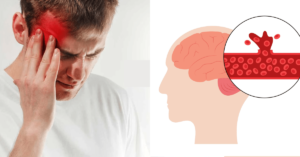
Liposuction’s canvas entails the skillful evacuation of excess fat, a practice that can inadvertently cause bleeding. The finely woven vascular topography of the body can occasionally respond to surgical intervention with minimal bleeding. While medical expertise strives to reduce this risk, it is critical to realize that the body’s response varies from person to person. Understanding the possibility of bleeding equips patients to take an active role in their recovery.
- Infection
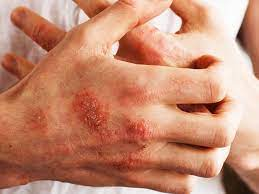
In the field of surgery, infection is a constant source of concern. Despite its transformative potential, liposuction is no exception. The sheer nature of surgical intervention, with incisions providing gateways to the body’s inner sanctums, presents an element of infection risk. To reduce this risk, strict attention to pre and post-operative care standards is required. A joint effort between the patient and the medical team strengthens the patient’s resistance against infection.
- Skin Discolorations

Liposuction attempts to shape a harmonic outline, but the canvas occasionally replies with uneven contours or dimples. This can happen if too much fat is taken from one place, causing neighboring areas to appear uneven. The surgeon’s skill is crucial in reducing this risk, as careful attention to the amount of fat taken from each location is critical. Recognizing the possibility of such skin imperfections gives a balanced perspective, helping people make informed decisions.
- Nausea

Although small, the incisions provide access to the body’s inner workings. Nerves in these areas are infrequently disturbed, resulting in transitory or even permanent numbness or tingling. While this phenomenon may appear alarming, it is generally associated with the body’s healing and adaptive processes. Recognizing this as a possibility allows patients to manage the recovery process of liposuction and weight loss with fortitude and patience.
- Accumulation of Fluid
The healing symphony occasionally orchestrates an unanticipated outcome: fluid buildup. After liposuction for fat loss surgery, the body’s response may include fluid collection in the treated areas. This causes swelling, which can be uncomfortable. Compression garments, a cornerstone of post-operative care, help treat this issue. The coordination of medical advice with the body’s healing rhythm aids in the resolution of fluid-related discomfort.
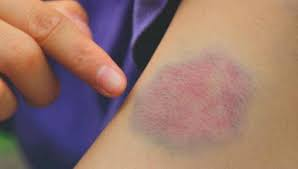
- Blood Clots
The post-liposuction recovery period is characterized by varied degrees of physical activity. The mobility, or lack thereof, of an individual might influence the formation of blood clots, particularly in the legs. This danger, while minor, emphasizes the need for post-operative recommendations. Encouragement of movement within normal bounds is the symphony that keeps the body’s circulation harmonic, lowering the likelihood of clot formation.
Liposuction vs. Non-surgical Fat Reduction
Body contouring has evolved far beyond typical surgical operations, now incorporating a range of non-surgical techniques that promise a road to a contoured profile. While liposuction for fat loss is a tried-ansted medical procedure, non-surgical fat removal procedures have carved their own niche, providing alternatives for people seeking aesthetic alteration.
- CoolSculpting: The power of cryolipolysis is harnessed by CoolSculpting, a non-surgical invention. The regulated administration of freezing temperatures to specific fat cells causes them to solidify and then undergo natural removal by the body. CoolSculpting’s allure stems from its non-invasive nature, which eliminates the need for incisions or anesthesia. This means less downtime and discomfort, as well as a lower risk of problems. The progressive nature of fat cell elimination results in a natural-appearing alteration, making it a favorite option for people searching for a modest yet obvious difference.

- SculpSure: Another non-surgical alternative is SculpSure, a technique that uses laser radiation to reduce fat. The targeted application of laser radiation burns fat cells, causing them to die. The body metabolizes and removes the leftovers of these cells over time, gradually revealing the finer shapes. SculpSure is well-known for its versatility, as it can treat a variety of body locations, including the abdomen, flanks, and even the chin. SculpSure’s non-invasive nature appeals to people who want to live their lives as little as possible.

- Kybella: Unlike the previous treatments, Kybella is an injectable solution designed exclusively to address chin obesity. Kybella is injected into the targeted location using a synthetic form of deoxycholic acid, a substance that naturally aids in fat metabolism. The acid then acts to dissolve fat cells, which are ultimately digested and removed by the body. The attractiveness of Kybella stems from its precision—a targeted remedy for a specific issue.
While non-surgical fat reduction approaches have great appeal, it’s important to understand that their effectiveness is context-dependent. The secret lies in their capacity to adapt to people who want a more gradual transformation, are scared of surgical treatments or have milder fat concerns. Liposuction, on the other hand, plays a distinctive role for people dealing with significant fat deposits or larger treatment areas.
FAQs
What exactly is liposuction?
Liposuction is a surgical technique that removes extra fat from the thighs, belly, hips, and chin. It entails making small incisions and suctioning out the fat with a thin tube (cannula), resulting in enhanced body shapes.
Who are the best candidates for liposuction?
Ideal candidates are people who are within 30% of their ideal body weight, are in good physical health, and have reasonable expectations for the results. Liposuction is not a weight loss solution for obesity, and people with a BMI greater than 30 may benefit more from alternative techniques of weight loss.
How long does it take to recover from liposuction?
Depending on the nature of the surgery, the recuperation period can range from a few days to several weeks. In the treated areas, patients may feel soreness, edema, and bruising, which can be managed with pain medication and compression garments.
What are the hazards associated with liposuction?
Risks include bleeding, infection, skin abnormalities, numbness, fluid accumulation, blood clots, and complications from anesthesia. Before the procedure, you should address these risks with your surgeon.
What are the various liposuction procedures?
Tumescent liposuction, ultrasound-assisted liposuction (UAL), laser-assisted liposuction (LAL), and power-assisted liposuction (PAL) are all options. Each has advantages and applications.
How does CoolSculpting work to reduce fat?
Cryolipolysis is used in CoolSculpting to freeze and kill fat cells, which are then naturally removed from the body over time. It is a non-invasive procedure that is appropriate for minor fat deposits.
What exactly is SculpSure, and how does it work to remove fat?
SculpSure heats and destroys fat cells using laser radiation. These cells are metabolized and eliminated by the body, resulting in gradual fat loss. It is non-invasive and effective for a variety of body locations.
What is Kybella, and who is it appropriate for?
Kybella is an injectable treatment that uses synthetic deoxycholic acid to dissolve fat cells under the chin. It is good for people who have localized chin fat.
Can liposuction be used to replace a healthy lifestyle for weight loss?
Liposuction is not a replacement for a healthy lifestyle. It is a contouring process for removing resistant fat. Maintaining a healthy lifestyle is critical for long-term results from liposuction and weight loss.
How do I decide between liposuction for fat loss and non-surgical fat reduction?
It all depends on your goals, the amount of fat you want to lose, and your personal tastes. Consult a skilled medical practitioner to identify the best approach for your specific circumstances.
Conclusion
To summarize, liposuction is still an effective and safe method of removing stubborn fat deposits. However, it should be noted that liposuction does not replace weight loss measures and is not appropriate for obese people. Successful applicants are in good health and have realistic expectations about the procedure’s consequences.
Liposuction has inherent dangers and potential complications, despite its benefits. Before surgery, an open discussion of these issues with a surgeon is required. While non-surgical fat reduction procedures exist, liposuction is best for significant fat removal.
Liposuction, in the end, can be revolutionary for people seeking improved body shapes. Research and consultation with a trained surgeon are essential, with an emphasis on maintaining a healthy lifestyle and weight for long-term benefits.
Disclaimer: The information provided in this article is for educational purposes only and should not be considered as a substitute for medical advice. Consult a healthcare professional before implementing any home remedies or making significant changes to your lifestyle.

